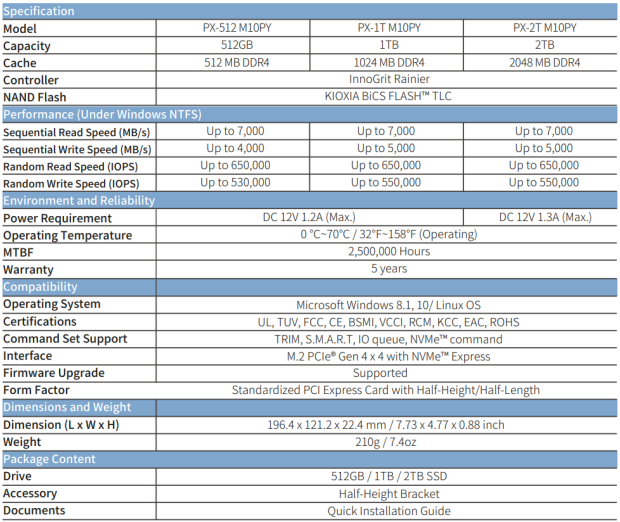

Model: Plextor M10PY 2TB NVMe PCIe 4.0 Solid State Drive
Manufacturer: Plextor
Provided By: Plextor LLC
As one of the biggest names in the storage industry, Plextor doesn't need much of an introduction. For nearly twenty years, they've produced some of the best optical drives the industry has seen. Known the world over for their quality, performance, and features, these drives have become favorites among consumers and professionals alike. Today, Plextor continues to lead the way by bringing cutting edge storage technologies to market. Along with an assortment of high-performance DVD and Blu-ray drives, the company offers a growing number of solid state drives.
Earlier this year, Plextor unveiled its first PCIe 4.0 SSD, the M10P. Designed for avid gamers and audio-visual (AV) enthusiasts, this M.2 form factor drive is powered by Innogrit's Rainier (IG5236) controller and is available with up to 2TB of Kioxia's 96-layer BiCS4 3D NAND flash. The M10P is also equipped with an ultra-fast PCIe Gen4 x4 NVMe 1.4 interface and features support for Plextor's exclusive PlexNitro II cache acceleration and TrueProtect error correction technologies.
Like its predecessors, the M10P is offered in a number of different capacities and configurations. The drive is available by itself in the M.2 2280 form factor (M10PGN), with a small aluminum heatsink (M10PG) and as an HHHL add-in card (M10PY) that's equipped with an extra large heatsink and RGB LED lights. For this review, Plextor sent us the 2TB version of the of the add-in card (M10PY), which is capable of delivering up to 7,000 MB/s sequential read and 5,000 MB/s sequential write speeds along with up to 650,000 random read and 550,000 random write IOPS.

Needless to say, this is only a taste of what the M10PY has to offer. To give you an idea of what to expect, we'll take a closer look at Plextor's new PCIe 4.0 SSD and then see how well it performs. Does the M10PY have what it takes? Can it deliver the performance and features that we've come to expect from Plextor? Keep reading as we find out.

